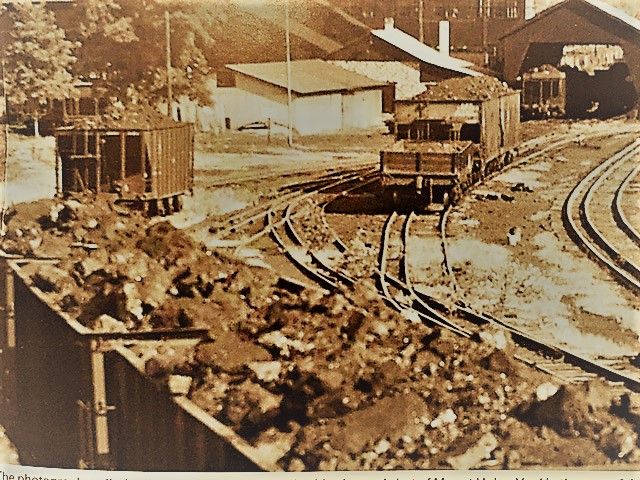The EBT hoppers carried what’s called “run-o-mine” coal; that is, coal fresh from the mines that hasn’t been cleaned or graded yet. It’s going to range in size from dust all the way up to volley-ball-sized lumps of coal (or larger). The hoppers dumped the coal into the Chance cleaning plant at Mt. Union, where it was cleaned and graded, then dumped directly into awaiting hoppers from the Pennsy.

Here’s a detail from Frank Kyper’s “Twilight and Dawn on the East Broad Top Railroad” which shows a loaded hopper.

Here’s my take on “run-o-mine” coal, as dumped into a tender. (Photos of EBT locos show run-o-mine coal in the tenders.)
The nice thing about run-o-mine coal is that it’s ridiculously simple to model:
-
Go out and get yourself a big lump of coal from your friendly neighborhood tourist railroad. Put it in a cloth bag/burlap sack kind of thing.
-
Watch your favorite sports team play really poorly. (An alternative would be to read political posts on facebook for an hour)
-
Grab a hammer.
-
Whack the living daylights out of the bag with the coal in it.
Now, making the actual hopper loads will be a few more steps. I haven’t gotten around to making mine yet. (Gotta get more coal from my friendly neighborhood tourist railroad.) Build an insert of some material or another (styrene, corrugated plastic, etc.), put the insert into the hopper, dump the coal, and glue. If you want it removeable, line the hopper with plastic wrap first, then place the insert, then glue. (That’s how I do my removable tender loads.)
And, Stan, shame on you for getting rid of your Timber Transfers… I hope, at least, they went to a worthy new home. 
Later,
K

